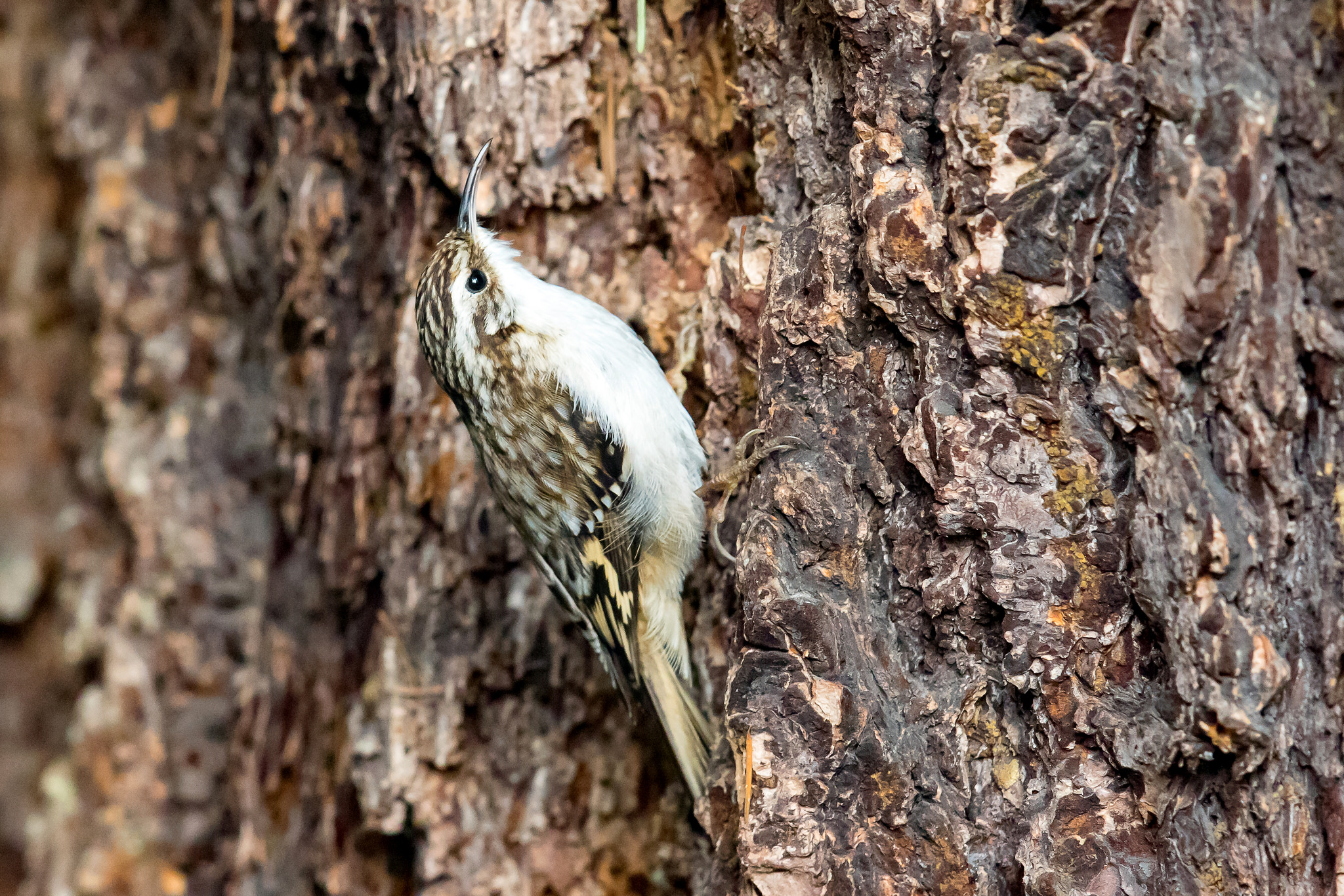The brown creeper, more evident now than perhaps at any time in its life cycle, remains a cryptic bird even as bird density has thinned considerably due to migration south. When threatened, brown creepers stay incredibly still, and their perfectly camouflaged plumage so matches the bark of trees that a still brown creeper can easily be mistaken for a leaf or peculiarity of the bark.
Photo by Mick Thompson, FCC
The secrets of the brown creeper intensify during its breeding season. Preferring bottomland forests of silver maple and elm, it is possible to find breeding birds in southern Wisconsin, though unlikely. In Wisconsin’s second Breeding Bird Atlas, Jefferson County only recorded one breeding pair, along the forested bottomlands of the Rock River as it enters Lake Koshkonong. Other breeding records in southern Wisconsin are rare, with scant records in lowland forests and bottomlands.
Brown creeper nest building. Photo by Don Henise, FCC
Brown creepers construct nests in a unique way; they layer cocoons and spider egg cases together with twigs and strips of bark, and almost all records have the placement of the nest behind a strip of bark hanging off a tree. Because of this habit, creepers need forests with old growth characteristics, with plenty of standing dead wood to provide excellent foraging and nesting opportunities. In fact, in western US forests, brown creepers are considered an indicator species of old growth forest because they prefer a dense upper canopy and tall trees—almost 50% taller at occupied versus unoccupied sites.
Using their long bills to pry away strands of bark is a favorite activity of creepers, and their process of foraging involves starting at the base of the tree and moving upward, then diving to the bottom of the next tree.
Some research suggests that brown creepers exhibit habitat partitioning with co-occurring birds like nuthatches. Creepers will forage lower on trees and on thicker branches while nuthatches prefer slimmer branches and higher points of the tree. However, in areas where forest has been fragmented or logged, the brown creeper has been shown to be in competition with these other species. Thus, large blocks of forest with large diameter trees are important to both overwintering and breeding grounds.
Photo by Claudine Lamothe, FCC
You can find brown creepers throughout Faville Grove Sanctuary, wherever there are good-sized trees. It’s rather rare that they use their high-pitched call during winter, so you’ll have to methodically scan trees in order to uncover this secretive species. Brown creepers will also frequent residential areas, again where large trees occur, so you might see them around your backyard.
Written by Drew Harry, Faville Grove Sanctuary land steward
Cover photo by Carolyn Lehrke, FCC







